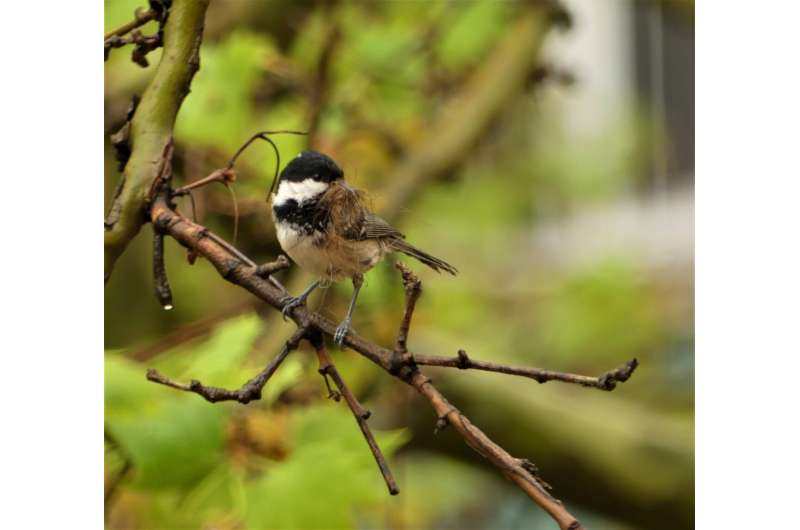This article has been reviewed according to Science X's editorial process and policies. Editors have highlighted the following attributes while ensuring the content's credibility:
fact-checked
peer-reviewed publication
trusted source
proofread
Study finds configuration of green spaces in cities determines the characteristics of their birds

An international team including researchers from the University of Granada (UGR) and the National Museum of Natural Sciences (MNCN-CSIC), has studied the distribution of 115 species of birds in spring and 72 that spend the winter in nine European cities.
They concluded that the configuration of urban areas could favor the presence of species with varying characteristics, with implications for the improvement of ecosystems and public health. The article, published in the journal Science of the Total Environment, proposes actions to promote the creation of cities that are not only more habitable for birds, but also more livable for citizens.
For this study, which also involved scientists from research centers in Finland, Poland, Germany, the Netherlands, and the Czech Republic, the research team collected data on bird communities in the two main types of urban development (land-sparing and land-sharing) in several European cities, including Madrid, Granada, Toledo, and Prague.
Land-sharing urban development is characterized by maintaining small green areas, usually in the form of private gardens and street vegetation, interspersed with single-family buildings and low population density. In contrast, land-sparing urban development is characterized by large green areas (usually large parks and gardens) that are clearly separated from the built-up areas, which are densely populated and contain apartment blocks.
"For each species identified in the European cities that were studied, we have quantified characteristics such as their degree of feeding specialization, the type of nests they build, the effort they invest in breeding, and their longevity. This has allowed us to assess whether urban design favors species with certain types of traits," explains MNCN researcher Mario Díaz.
"In previous studies, we had already found that the presence of different bird communities was determined by land-sharing and land-sparing types of urban development," says UGR researcher Juan Diego Ibáñez Álamo. "This research has also allowed us to identify the characteristics that allow them to settle in one type of urban area or another," he adds.
Land-sparing urban areas are breeding grounds for birds that lay many eggs, use open nests more frequently, and have short life cycles, such as stonechats, chiffchaffs, and crested larks. In contrast, land-sharing urban areas are dominated by birds with more demanding breeding requirements and longer life cycles, such as great tits, kestrels, and gulls.
"The data we have obtained clearly shows the need to promote a mix of both types of urban development to allow for greater bird diversity. Greater urban biodiversity is not only beneficial for our immediate environment but also for our own health and well-being," the MNCN researcher concludes.
More information: Juan Diego Ibáñez-Álamo et al, Urban landscape organization is associated with species-specific traits in European birds, Science of The Total Environment (2023). DOI: 10.1016/j.scitotenv.2023.167937
Journal information: Science of the Total Environment
Provided by University of Granada





















